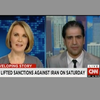Ceremonies in the Islamic Republic of Iran began two weeks ago, marking the 35th anniversary of the victory of the 1979 Islamic Revolution, which deposed pro-West monarch Muhammad Reza Shah and brought in the Islamic Republic.
The beginning of the 10 days of celebration, called the 10-Day Dawn (Fajr) festivities across Iran, marks the day when the late founder of the Islamic Republic Imam Ayatollah Rooh Allah Khomeini arrived back home from exile. Khomeini came back to Iran on February 1, 1979 after having spent more than 14 years away, mostly in the Iraqi holy city of Najaf, but also some time in Turkey and France.
The celebration culminates in one of largest nationwide rallies to celebrate the anniversary of the triumph of the Islamic Revolution.
The critical questions that arise are linked to how Iran's geopolitical, geostrategic and economic stance has evolved? Have its foreign and domestic policies influenced and impacted the Iranian nation? And how its power struggle and stance have expanded and developed both regionally and internationally?
Domestic Policies: The New Social Order
After the overthrow of the secular and pro-Western state, Iran instituted a new social order based primarily on Shiite thoughts and ideals like the introduction of Jurisprudent Leadership (Vilayat-e Faqih), giving divine power to the Supreme Leader (Vali), whose legitimacy lies in his supposedly unmatched knowledge of Islam and his piety. Article 57 was added to the constitution to emphasize this shift: "The powers of government in the Islamic Republic are vested in the legislature, the judiciary, and the executive powers, functioning under the supervision of the absolute religious leader and the Leadership of the Ummah, in accordance with the forthcoming articles of this Constitution..."
Domestically speaking, while some scholars would argue that the Islamic Republic has failed, the change in government has brought about socio-political advantages and disadvantages for Iran.
On the one hand, the economic mismanagements, imposition of Shiite thought, governmental corruption within the system, normalizations of strict laws (such as dress codes, mandatory Hijab or preferably Chador), segregations in schools and public spaces, tightening the boundaries of fun for the youth, and the lack of economic opportunities have created a considerable disenchanted and disaffected portion in Iranian society, particularly the youth. Roughly more than 50 percent of Iran's population is under 30 years old, meaning they were born after the Islamic revolution.
This resistance has manifested in several large demonstrations and protests, notably the June 12 protests of 2009. As a result, this phenomenon has become a constant concern for Iran's Supreme Leader, Ayatollah Ali Khamenei and other Iranian leaders.
The economic mismanagement has also led to further pressure and degradation, such as the devaluation of Rial from 1 dollar-7 Toman (70 Rial) to approximately 1 dollar -- 3100 Toman (31000 Rial), continuous inflation and high unemployment.
Ratcheting Up Military Capabilities
Yet, due to the sanctions and gradual increase in Tehran's isolation, the Islamic Republic has grown to be more self-sufficient in some industries, including multiple ballistic and cruise missile systems (Shahab-3, the Shahab-3D), investment in nuclear technologies, missile-equipped drone with a range of 2,000 kilometers (such as Fotros drone), automobiles like Sepehr, and air-to-air missiles such as the copy of U.S. AIM-9 Sidewinder, the Fatter.
This move toward self-sufficiency has mostly been concentrated on military programs since 1980s, as seen in the frequent announcements by Iranian leaders about various technological breakthroughs including the building of jet fighters, submarines, tanks, and torpedoes.
Nevertheless, it is worth noting that although Iran is not dependent on foreign technologies regarding some particular advancements like adding value to gas to produce electricity, Tehran is still significantly dependent on foreign sources for more advanced technologies and other critical commodities such as petrochemicals, civilian airplanes, gas-based industries, liquefied natural gas or LNG, and others. The current sanctions have also made accessibility to these technologies more difficult.
Foreign Policy Objectives
Regarding regional politics, the Islamic Republic's foreign policies have played roles in both sharpening Middle East politics, and thwarting the objectives of other regional powers. The struggle for power and the efforts to increase influence in the region between Iran and other regional actors naturally existed before the Islamic Republic; however, the tensions were intensified when this more assertive ideological bent was added to Tehran's foreign policies.
The Islamic Republic of Iran emphasized on promoting Shia Islam over Sunni Islam throughout the Muslim world as a formidable foreign policy strategy.
Advanced Shi'a Islamic scholarship has been established, and Qom has become the largest center for Shi'a ideology and scholarship in the world -- with many religious seminaries where an estimated 70,000 seminarians travel from several nations. The Shiite collation is also strengthened by the creation of non-state actors and proxies such as Hezbollah. The shift in Iran's foreign policy led to the development of staunch alliances in the region, primarily with Assad's regime and partially with Turkey.
Considering the Western powers, the primary tension with Iran was created not because of Iran's domestic human rights violations, but due to Iran's nuclear ambitions and its efforts to thwart the West's Middle Eastern foreign policy objectives (particularly that of the United States and its regional allies). These two phenomenon have led to periods of ups and down in UNSC sanctions and geopolitical, geostrategic, and geo-economics isolation of Tehran.
Although, the regional and international pressures have significantly impacted Iran's economy and politics, and although the new social order of the Islamic Republic has cast doubts over Iran's political structure as a sustainable system, the tangible concern and threat to the Islamic Republic actually comes from within the system, from the Iranian people themselves.
If the increase in the disaffected youth population continues to grow, the sustainability of the system is likely to be significantly confronted from within the nation itself.
Majid Rafizadeh, an American scholar at Harvard and political scientist, is president of the International American Council on the Middle East. He is originally from Islamic Republic of Iran and Syria.
This post first appeared on Al Arabiya.
